
Format: Paperback
Pages: 80
ISBN: 9782840483090
Pub Date: 01 May 2011
Illustrations: illustrated in colour throughout
Description:
• A highly illustrated colour guide to the different phases of operations during the Battle of NormandyThe Battle of Normandy is the official term for the British and Canadian military campaign lasting from June 6 – September 1, 1944, and included the following:• The Normandy Landings on June 6, 1944• The Invasion of Normandy, or "Operation Neptune" – The initial part of Overlord, from June 6 – mid-July 1944• Operation Overlord – The Western Allied campaign in France from June 6 – August 25, 1944• Operation Cobra, the breakout from Normandy, starting on July 25, 1944After the huge success of the The Landing Beaches, we now present this new guide, showing the different phases of operations from June 6 until the end of the battle.This book is printed in English, with many rare photographs in colour throughout.
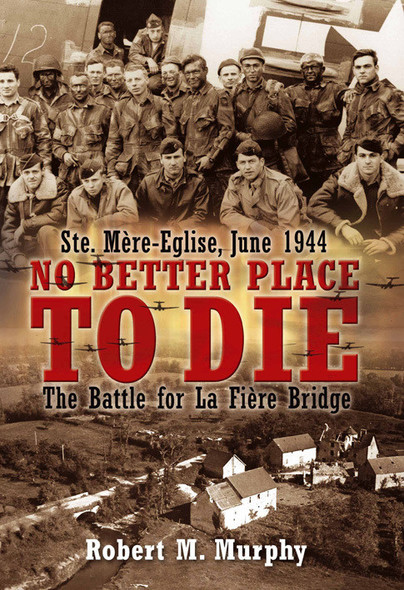
Format: Paperback
Pages: 288
ISBN: 9781935149880
Pub Date: 01 May 2011
Illustrations: 16-page photo section
Description:
“Those wanting an up-close and personal memoir of small unit infantry during Operation Overlord have an opportunity to receive it from an American fighting man who lived to tell the tale.” Military Magazine, November 2010As part of the massive Allied invasion of Normandy, three airborne divisions were dropped behind enemy lines to sew confusion in the German rear and prevent panzer reinforcements from reaching the beaches. In the dark early hours of D-Day, this confusion was achieved well enough, as nearly every airborne unit missed its drop zone, creating a kaleidoscope of small-unit combat.
Fortunately for the Allies, the 505th Regimental Combat Team of the 82nd Airborne Division hit on or near its drop zone. Its task was to seize the vital crossroads of Ste Mère Eglise, and to hold the bridge over the Merderet River at nearby La Fière. Benefiting from dynamic battlefield leadership, the paratroopers reached the bridge, only to be met by wave after wave of German tanks and infantry desperate to force the crossing. Reinforced by glider troops, who suffered terribly in their landings from the now-alert Germans, the 505th not only held the vital bridge for three days but launched a counterattack in the teeth of enemy fire to secure their objective once and for all, albeit at gruesome cost. In No Better Place to Die, Robert M. Murphy provides an objective narrative of countless acts of heroism, almost breath-taking in its “you are there” detail.

Format: Paperback
Pages: 256
ISBN: 9781612000091
Pub Date: 15 Apr 2011
Illustrations: Fully illustrated throughout
Description:
Want to know how to destroy a tank? Derail a train? Fell a tree?
Break up a gun? Damage telephone wires? Destroy a bridge? Go back in time and become a partisan preparing for Nazi invasion with this original guerilla warfare manual produced for Russian civilians in 1943. The original version of this manual was distributed to the public in December 1941 as Nazi tanks rolled toward Moscow. When Germany invaded the Soviet Union, the Red Army was hard pressed to cope with the “invincible” Wehrmacht. Yet by 1943, it was obvious that Germany was losing the war. The partisan ranks grew as did the training requirements for the partisan commanders. The 1943 edition of The Partisan’s Companion helped quickly train new guerrillas to a common standard. Inside was chapter after chapter of guerrilla warfare and survival tactics designed to turn ordinary civilians into freedom fighters capable of defending their homes against the Nazis. In this complete, expanded and last third edition, the manual incorporates all the lessons learned in battle. You'll learn the tactics of partisan warfare as practiced by Soviet citizens during World War II, including how to ambush the bad guy and get away with it, from railroads to highways; destroy their tanks without detection; blowing up supply stations; set up and use improvised sniper positions; carry out sappy work such as felling trees, damaging telephone and telegraph wires and destroying bridges; surviving under harsh winter conditions and perhaps the most important role of all – reconnaissance and recognizing the enemy before they recognize you.

Format: Paperback
Pages: 480
ISBN: 9781920143565
Pub Date: 01 Apr 2011
Illustrations: 60 b/w photos, maps
Description:
Using archival sources and private documents recently unearthed, Come Back to Portofino chronicles the journey taken by volunteers in the 6th South African Armoured Division. From training camps in Egypt through to the blissful summer of 1945 the ‘Div’ left its mark on towns and villages across Italy. From Monte Cassino to the outskirts of Venice and the River Po, the campaign lasted exactly twelve months.
During the advance through Rome up to Florence, it was a case of constant movement and violent contact with the enemy. Experiences which left an enduring impression on returned soldiers included the periods of rest at Siena and Lucca as well as the four miserable winter months in the northern Apennines. Overall, the casualty rate was surprisingly low considering the ideal ambush country and mountain defences which had to be overcome. In the rifle companies however, the rate of attrition was high and replacements were few. Among the South Africans who are buried in Italy, there are those who died in vehicle accidents, from drowning and falling out of windows or from suicide. For the ordinary soldier the most important part of everyday life was contact with home or foraging for food and wine, and even enjoying the company of signorine when operations permitted. Nevertheless, it was not one long happy camping trip as was often portrayed in the press. The cast is made up of the famous regiments and ordinary South Africans who participated in these epic events. About the AuthorJames Bourhill is a property valuer but his passion has always been history and travel. Currently these two interests are combined in his research for a D.Phil in history.

Format: Paperback
Pages: 256
ISBN: 9781935149835
Pub Date: 01 Apr 2011
Illustrations: 16pp photo section
Description:
“ A true member of the Greatest Generation, Burns’ fascinating story is well worth reading.” - Flight JournalJump: Into the Valley of the Shadow tells of the wartime experiences of Dwayne Burns as a paratrooper in the 508th Regiment of the 82nd Airborne Division. The author recounts the action of his first mission, which took place in the early hours of D-Day.
Having been dropped behind enemy lines, the paratroopers fought in a desperate running battle with German soldiers. Burns and his men held their ground until they were relieved by infantry advancing from the beaches. The 82nd Airborne Division were then sent to Holland as part of Montgomery’s plan to create a bridgehead across the Rhine. This daytime jump was less confused than the previous night-time one, but there were more German troops than expected and fewer Allied forces in support. The combat that followed was chaotic, and although the 82nd achieved their objectives, there were many casualties. Possibly the author's greatest challenge came in December 1944 , when Germany undertook their infamous Ardennes Offensive. With the Allies caught unprepared, the 82nd had to try to slow the lightening advance of the German panzers. Burns and his comrades held their own and with quickly assembled defence perimeters, they allowed other units to escape. On 3 January the 82nd were able to counter-attack, and in sealing off the Bulge, they were able to continue their pursuit of the Germans back into the Reich.Dwayne Burns relates not only the chaos of combat, but the intimate thinking of a young soldier thrust into the centre stage of several of World War II’s greatest battles. His memories are also able to provide a fascinating insight into the reality of close-quarter combat.
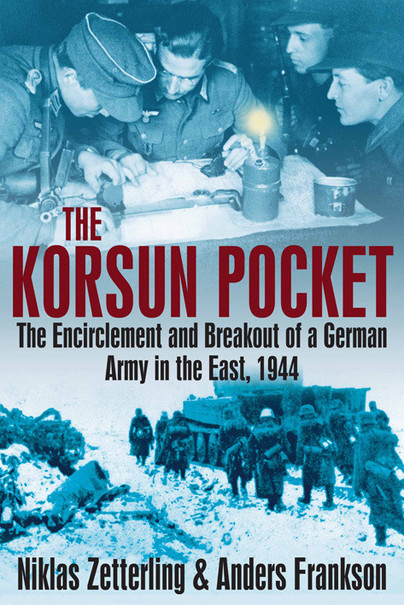
Format: Paperback
Pages: 384
ISBN: 9781935149842
Pub Date: 01 Apr 2011
Illustrations: 35 b/w photos and maps throughout
Description:
During the second half of 1943, after the failure at Kursk, Germany’s Army Group South fell back from Russia under repeated hammerblows from the Red Army. Under Erich von Manstein, however, the Germans were able to avoid serious defeats, while at the same time fending off Hitler’s insane orders to hold on to useless territory. Then, in January 1944, a disaster happened.
Six divisions of Army Group South became surrounded after sudden attacks by the 1st and 2nd Ukrainian Fronts under command of generals Nikolai Vatutin and Ivan Konev around the village of Korsun (near the larger town of Cherkassy on the Dnieper). The Germans’ greatest fear was the prospect of another Stalingrad, the catastrophe that had occurred precisely one year before. This time, though, von Manstein was in control from the start, and he immediately rearranged his Army Group to rescue his trapped divisions. A major panzer drive got underway, led by General der Panzertruppen Hans Hube, a survivor from Stalingrad pocket, which promptly ran up against several soviet tank armies. Leading the break-in was Franz Baeke with his Tiger and Panther-tanks. Due to both weather and ferocious resistance, the German drive stalled. Ju-52s still flew into Korsun’s airfield, delivering supplies and taking out the wounded, but it soon became apparent that only one option remained for the beleaguered defenders: breakout. Without consulting Hitler, on the night of February 16 von Manstein ordered the breakout to begin. When dawn broke, the Soviets realized their prey was escaping. Although the Germans within the pocket lost nearly all of their heavy weapons and left many wounded behind, their escape was effected. Stalin, having anticipated another Stalingrad, was left with little but an empty bag, as Army Group South, this time, had pulled off a rescue. In The Korsun Pocket, Niklas Zetterling, a researcher at the Swedish Defense College since 1995 and Anders Frankson, have provided a highly detailed and often breathtaking account of one of the most dramatic battles of World War II.
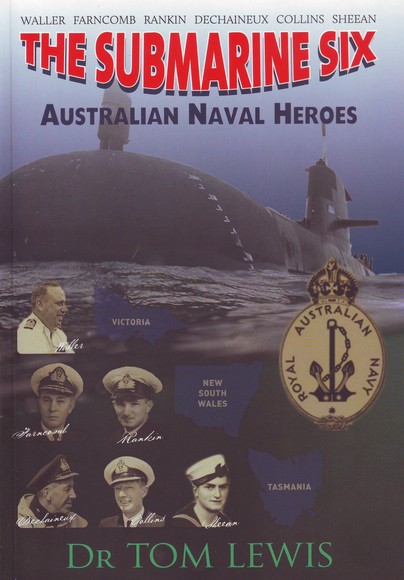
Format: Paperback
Pages: 202
ISBN: 9780987151919
Pub Date: 31 Mar 2011
Illustrations: fully illustrated; colour
Description:
Naval conflicts take place often far from our shores. Ships and men sometimes disappear, to leave only mystery in their wake. In the 1990s the Royal Australian Navy broke with tradition, and for the first time named six submarines after naval heroes.
This book shows the true depths of their acheivements. These were men whose warrior exploits stand alongside those of any other nations. But they have been largely unrecognised, save for those submarines. Captain Hec Waller, for example, fought to the end in HMAS Perth, alongside fellow cruiser HMAS Houston. The Houston’s Captain Rooks was deservedly awarded the Congressional Medal of Honor, America’s highest honor. Captain Waller, by comparison, was given distinction, but not of the highest rank. Should he have been given the Victoria Cross? Other heroes stand alongside him. Emile Dechaineux, hero of Dunkirk and the North Sea, battling it out against Japanese Kamikaze attack. John Collins, taking HMAS Sydney to victory against Italian cruisers. Hal Farncomb – the first Australian to command an aircraft carrier, in action off the French coast. But The Submarine Six also examines whether two more of its men deserve futher honor. Teddy Sheean, tenacious gunner from Tasmania, fought to the end in HMAS Armidale. Robert Rankin commanded HMAS Yarra against fearful odds, dying in defence of his convoy, attacked by overwhelming Japanese forces. Are they also VC candidates?
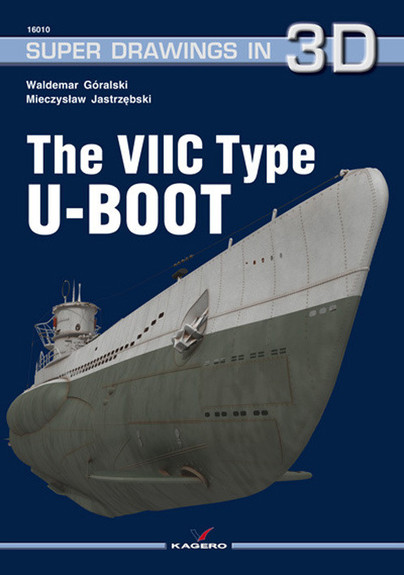
Format: Paperback
Pages: 72
ISBN: 9788361220770
Pub Date: 01 Mar 2011
Series: Super Drawings in 3D
Illustrations: 44 b/w photos, 84 visualisation 3D,
Description:
The type VIIC was a slightly modified version of the successful VIIB. They had basically the same engine layout and power, but were slightly larger and heavier which made them not quite as fast as the VIIB. 5 torpedo tubes (4 at the bow and one at the stern) were installed in all but the following boats; only two bow tubes (U-72, U-78, U-80, U-554 and U-555) and no stern tube (U-203, U-331, U-351, U-401, U-431 and U-651).
The VIIC was the workhorse of the German U-boat force in World War Two from 1941 onwards and boats of this type were being built throughout the war. The first VIIC boat being commissioned was the U-69 in 1940. The VIIC was an effective fighting machine and was seen in almost all areas where the U-boat force operated although their range was not as great as the one of the larger IX types.The VIIC came into service as the "Happy Days" were almost over and it was this boat that faced the final defeat to the Allied anti-submarine campaign in late 1943 and 1944.Perhaps the most famous VIIC boat was the U-96 which is featured in the movie Das Boot, other noticeable boats were the U-flak boats. Many of these boats were fitted with the Schnorkel in 1944-1945. This design saw one more improvement in the type VIIC/41 boat.The larger mine-laying type VIID was a direct variant of the VIIC.
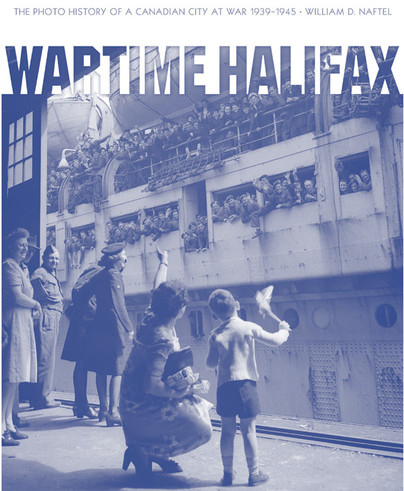
Format: Paperback
Pages: 128
ISBN: 9780887808357
Pub Date: 27 Feb 2011
Illustrations: colour & b/w photos throughout
Description:
In 1939, Halifax quickly became the country's centre of war activity when Canada declared war on Germany. With its vital naval base and its key role in getting supplies to Great Britain, the city was on a wartime footing for seven long years. Blackouts, enemy ships just offshore, and worries about raids and attacks were part of daily life.
So were thousands of soldiers, sailors, airmen and merchant seamen who passed through on their way to or from Europe.Wartime Halifax is a visual history of this period. William Naftel has found a treasure trove of archival photos showing the bustling shipyards, construction, convoys and cadets, and never before seen images of parades, platoons and personnel. The photos show the dramatic impact of the war on city life -- long lineups at movie theatres, crammed dance halls, and crowded restaurants. Visuals and text convey a unique portrait of a wartime city -- not in cosmopolitan Europe but on Canada's east coast.This is a book for anyone with an interest in the history of the Canadians who participated in the Second World War. It is a companion to William Naftel's double award-winning book Halifax at War published in 2008.About the Author William D. Naftel was a historian and regional manager with Parks Canada for thirty years, in Ottawa and Nova Scotia. He is the author of Halifax at War, winner of the Dartmouth Book Award for non-fiction and the Democracy 250 Atlantic Book Award for Historical Writing. He lives in Halifax.
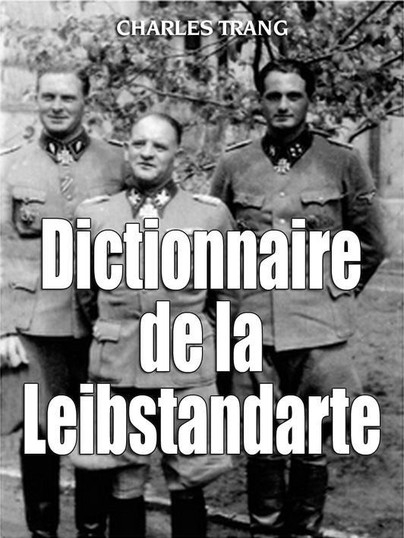
Format: Hardback
Pages: 320
ISBN: 9782840482635
Pub Date: 15 Feb 2011
Illustrations: 600 photographs
Description:
The Leibstandarte was Adolf Hitler's personal Bodyguard Regiment, and independently participated in combat during the Invasion of Poland. By the end of World War II it had been increased in size from a regiment to a Panzer division. The elite division was a component of the Waffen-SS which was found guilty of war crimes in the Nuremberg Trials.
In the earliest days of the NSDAP, it was realized by the leaders that bodyguard units composed of trustworthy and loyal men would be a wise development. In 1934, by order of Himmler, the initials "SS" were added to the Leibstandarte's title, thus becoming the Leibstandarte SS Adolf Hitler. Then, in late June of 1934, the Leibstandarte SS Adolf Hitler was called into serious action for the first time. As a result of a the political situation that had been growing within the NSDAP over Ernst Röhm and his stated desire for a second revolution in Germany, a move was made to remove the problematic heads of the SA. This action culminated in what is known as Die Röhm Affäre and the Night of the Long Knives.The 2 volume Dictionnaire de la Leibstandarte offers detailed portraits and biographies of the principal members of Hitler’s Leibstandarte. Compiled together for the first time, the 600 photographs provide rare images of the men who served in this army, along with the uniforms they wore and related objects in their possession.
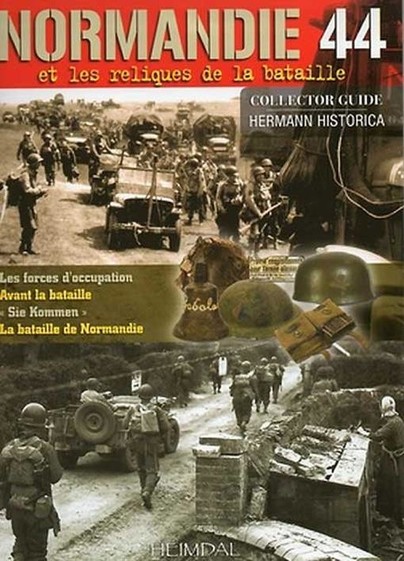
Format: Hardback
Pages: 80
ISBN: 9782840482772
Pub Date: 15 Feb 2011
Illustrations: illustrated throughout
Description:
The Normandy landings commenced on D-Day, Tuesday, 6 June 1944, in two phases: an air assault landing of 24,000 British, American, Canadian and Free French airborne troops shortly after midnight, followed by an amphibious landing of Allied infantry and armoured divisions on the coast of France commencing at 6:30 AM. There were also decoy operations mounted under the codenames Operation Glimmer and Operation Taxable to distract the German forces from the real landing areas.The operation was the largest amphibious invasion of all time, with over 160,000 troops.
Allied naval and merchant navy personnel in over 5,000 ships were involved. The invasion required the transport of soldiers and material from the United Kingdom by troop-laden aircraft and ships, the assault landings, air support, naval interdiction of the English Channel and naval fire-support. The landings took place along a 50-mile (80 km) stretch of the Normandy coast divided into five sectors: Utah, Omaha, Gold, Juno and Sword.This essential guide, of use to both the visitor and the collector, chronicles all aspects of the Battle of Normandy. In addition to offering a historical overview, each phase of the battle, from the sandy beaches to the farmlands, is accompanied by amazing colour photos of the uniforms, equipment, and arms of the various participants involved in combat. Of note are the original uniforms selected from important collections found through Hermann Historica.
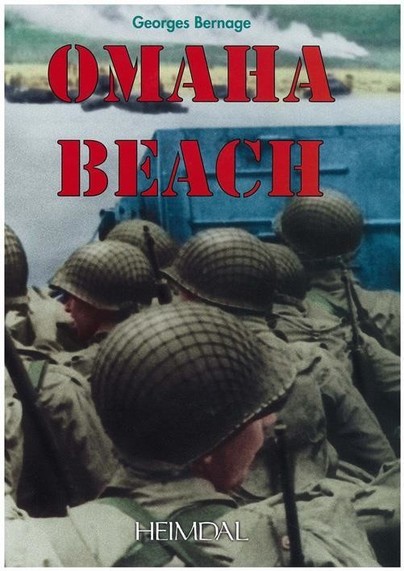
Format: Paperback
Pages: 160
ISBN: 9782840482871
Pub Date: 15 Feb 2011
Illustrations: coloUr illustrations/photographs throughout
Description:
June 6, 1944. In the gray light of dawn the landing craft carrying the assault wave of two US divisions as well as the Engineers and the Rangers, advanced toward the beach that was their assigned objective, code-named Omaha. Exhausted by the crossing and suffering from sea sicknesses, the assault units were convinced, however, that the German defenses had been crushed by the aerial and naval bombardment.
In fact, sheltering in their coastal fortifications which they had been working to improve up until the very evening before, the Germany infantry waited until the Americans reached the shoreline before opening fire.0630 hours. The landing craft of the first wave beached and lowered their ramps. That was the moment the enemy had been waiting for, and on the beach soon called Bloody Omaha, all hell broke loose.This volume brings to life that page of history. The first part introduces the forces on both sides, presents the American plan and explains in detail the German defensive positions. The second part details the landing of the successive waves followed by a blow-by-blow account of the GIs on the beach under a hail of fire in the middle of the anti-invasion obstacles. Overall, it explores through words and images all the violence and horror of the fighting on Omaha Beach.
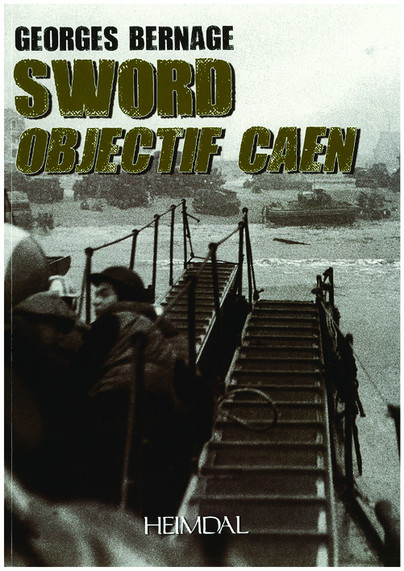
Format: Paperback
Pages: 80
ISBN: 9782840482888
Pub Date: 15 Feb 2011
Description:
June 6, 1944, the 3rd British Infantry Division, considerably reinforced (with an armoured unit, special tanks, and a commando unit), landed on Sword Beach while, during the night, paratroopers from the 6th Airborne Division had already created a bridgehead to the northeast of Caen. In Bernage’s new work, not only do we find the German defenses coming face to face with the powerful forces advanced by the Allies, but also the major protagonists, among whom many have become legendary—Lord Lovat, Bill Millin, Major Howard, Commander Kieffer and his French commandos—but their adversaries as well, Major von Luck or Lieutenant Höller. Sword Objectif Caen presents a crucial page of history, brutally unfolded before Caen, the town that was martyred and which was only rescued after a long month of combat.
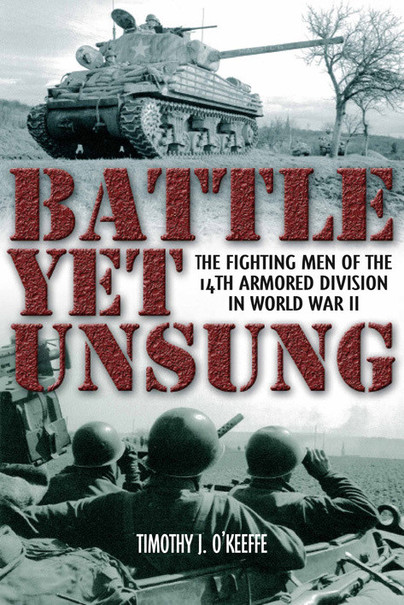
Format: Hardback
Pages: 336
ISBN: 9781935149446
Pub Date: 01 Feb 2011
Illustrations: 16-pg photo section
Description:
While headline writers in the ETO were naturally focused on events in Normandy and the Bulge in the north, equally ferocious combats were taking place in southern France and Germany during 1944–45, which are now finally getting their due. The US 14th Armored Division—a late arrival to the theatre—was thrust into intense combat almost the minute it arrived in Europe, as the Germans remained determined to defend their southern flank.Like other US formations, the 14th AD, after advancing through France, was hammered to a standstill at the Westwall in the autumn of 1944.
Nevertheless, it had gained experience, and when the Germans sought to turn the tide, with Operation Northwind, they found a hardened formation against them. This book explores in detail what happened in the month of January 1945 in the snow-covered Vosges Mountains, when the Wehrmacht's attempt to destroy the Sixth Army Group failed. As a result of the rapid advance of Seventh Army and the 14th, German POW camps like the ones at Hammelburg and Moosburg were liberated of over 100,000 prisoners, an achievement which gave the division the nom de guerre The Liberators. About the AuthorTimothy O’Keeffe, a Professor Emeritus from Southern Connecticut State College, whose brother-in-law serving with The Liberators lost his leg, has devoted years of effort to unveiling the crucial, yet heretofore unwritten, role that they played in the ultimate Allied victory.

Format: Paperback
Pages: 224
ISBN: 9781935149392
Pub Date: 01 Feb 2011
Illustrations: b/w photos
Description:
Unlike previous books on Ploesti, Jay Stout goes well beyond the famous big and bloody raid of August 1943 and depicts the entire 1944 strategic campaign of twenty-plus missions that all but knocked Ploesti out of the war and denied the German war machine the fuel and lubricants it so desperately needed.While Fortress Ploesti is the narrative history of the entire air campaign to deny the Ploesti oil complex to the Axis powers, Stout, who served as a Marine F/A-18 pilot in the First Gulf War, asks questions about the aerial strategy and combat history relating to this crucial campaign. He carries the ball far beyond the goal post set by all other Ploesti historians.
He has gone out of his way to describe the defences throughout the campaign, and he brings in the voices of Ploesti's defenders to complement the tales of Allied airmen who brought Ploesti to ruin. He describes the role of the bombers, that of the fighters, and explains the developments in anti-aircraft defences, such as the technique of obscuring the Ploesti complex with smoke, which defined the campaign’s combat strategy. In the end, Stout's narrative describes the entire Ploesti effort for the very first time in print, and, by proxy, guides the reader through the intricacies of the entire Allied strategic bombing campaign in Europe, and all the weapons and techniques the Axis powers used to parry it. His lucid presentation of complex issues at both tactical and strategic levels is impressive.

Format: Paperback
Pages: 80
ISBN: 9782352501299
Pub Date: 15 Jan 2011
Illustrations: 150 photos, 56 profiles
Description:
A multirole jet fighter aircraft originally developed by General Dynamics for the United States Air Force, the F-16 has been in service for an incredible 36 years, with no sign of retiring. At a time when other planes retire to museums, General Dynamics’ fighter bomber is still a formidable foe in international combat against so-called “fifth generation” planes.The first prototype flew for the first time in 1974 and the operational career of the last aircraft built will continue well into the 2040s - almost 75 years and still going strong!
Meanwhile, this light fighter was optimised for daylight missions and became a formidable fighter-bomber; more than 4,400 were built and used by more than 25 countries.Two volumes will be devoted to the F-16, this first will deal with it’s development and the F-16A and B.
















